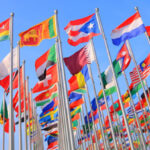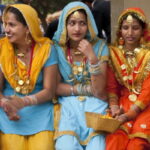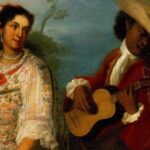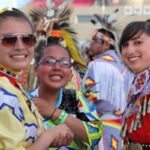We explain what an ethnic group is, what factors identify them and examples from Mexico and the world. Also, differences with a race.
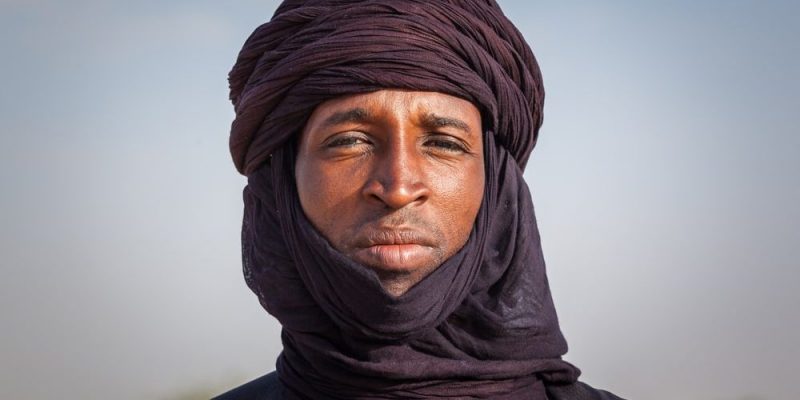
What is an ethnicity?
It is called ethnicity (a word from the Greek ethnos“people” or “nation”) or ethnic group to a social group whose members identify with each other on the basis of a common origin and certain shared traits, such as language, religion and culture. The term is often used ethnicity to refer to the distinctive characteristics through which an ethnicity is recognized.
According to the British sociologist and founder of the field of ethnosymbolism studies, Anthony D. Smith (1939-2016), ethnic groups must be understood as “human populations that share myths about ancestry, stories, cultures, which are associated with a specific territory and have a feeling of solidarity.” Those who are part of the same ethnic group feel linked to each other by historical and cultural ties as members of the same family, even if they do not know each other personally.
Currently, there are ethnic groups in all parts of the world. Some have lived in the same territory since ancient times ; others, however, have expanded to various regions. In general, larger ethnic groups are often subdivided into subgroups or tribes, which, over time, can become distinct ethnic groups. Conversely, ethnicities that were separate can merge and form a single ethnic group.
So much a person as a group can move from one ethnic group to another through processes of acculturation, assimilation and religious conversion. It may also be the case that two or more ethnic groups influence each other, through processes of miscegenation or religious syncretism.
Characteristics of an ethnic group
Ethnic groups are human groups, but not all human groups constitute ethnic groups, so it is often difficult to determine what an ethnic group is. In this regard, some characteristics that are taken into account are the following:
- A certain sense of origin, expressed in a founding myth and a common historical memory.
- A shared cultural background, expressed in traditions, beliefs and values.
- A language or dialect of their own, although many ethnic groups are multilingual and, at the same time, different ethnic groups can share the same language.
- A more or less remote relationship between members, which may manifest itself in some degree of common genetic ancestry. However, it should be kept in mind that many ethnicities have mixed genetic ancestry.
- Additionally, for the identification of an ethnic group, the subjective experience of its members is important. In this sense, the belief of belonging to a culturally distinctive group, different from other groups, is an aspect that must be taken into account, along with the willingness of the members to exhibit the group's own traits (ways of dressing, eating habits , religious rites, etc.).
Types of ethnicities
According to the characteristic or aspect considered to define belonging to an ethnic group, these can be grouped as follows:
- Ethnolinguistic groups. They are focused on the shared language or dialect. For example: the Basques.
- Ethnonational groups. They are focused on a shared system of government or a sense of national identity. For example: the Poles.
- Ethnoracial groups. They are focused on physical appearance, based on phenotypic traits. For example: African Americans.
- Ethnoregional groups. They are focused on the sense of local belonging, derived from geographical isolation. For example: the inhabitants of the Isle of Man, in Great Britain.
- Ethno-religious groups. They emphasize a religion or a series of religious practices. For example: the Mennonites.
- Ethnocultural groups. They are centered on a common culture or tradition. For example: the Magyars.
Membership in one of these groups often overlaps with membership in another group or groups. For example: the Basques are at the same time an ethnolinguistic, ethnoregional and ethnocultural group.
Ethnicities according to their language
Ethnic groups or ethnic groups can also be classified according to their language (although there are multilingual ethnic groups and others that share the same language). Based on this, a series of large groups are recognized, corresponding to linguistic families that include one or more ethnic groups.
- Indo-Europeans. includes the peoples who speak Albanian, Armenian, Greek and the Baltic, Celtic, Germanic, Indic, Iranian, Romance and Slavic languages.
- Afro-Asians: includes the peoples speaking the Berber, Chádic, Cushitic, Semitic, Joisan, Niger-Congo and Nilo-Saharan languages.
- Australians
- Austroasiatics
- Austronesians
- Caucasians
- Dravidian
- Paleosiberians
- Papuans
- Tai-kadai
- Uralics
- Basques
- Altaic: includes the peoples speaking Korean and Japanese and the Mongolic, Tungus and Turkic languages.
- Sino-Tibetans: includes speakers of the Chinese and Tibeto-Burman languages.
- Amerindians
- Eskimo-aleuts
Difference between ethnicity and race
Race and ethnicity are two related concepts: both are refer to human groups whose members are linked by ancestry. However, these are very different notions.
- Race is defined as a group that shares certain distinctive physical traits. It is linked to physical characteristics, such as skin color, eye shape or hair texture.
- Ethnicity is a group of people with a common origin and who share a cultural background, a way of life, beliefs or a language.
Just as the concept of ethnicity is linked to cultural identification, that of race is usually associated with biology. However, are both social constructs used to classify apparently different groups. Neither race nor ethnicity can be detected in the genome.
The variations observed in human beings are not due to different genes, but, in any case, to the expression of some genes. But even these variations are biologically insignificant: More than 99% of human genetic material is common to all members of the species and variations occur more between individuals than between ethnic groups.
The concept of “race” to classify the human species has been widely criticized and is currently out of use in the scientific field. However, it still lives on in popular culture.
The term race It is not free from the racist and discriminatory considerations that gave rise to it, in a context in which Western colonial powers developed biologicalist discourses to, in some way, justify the subjection of the peoples of the colonies.
Examples of ethnicities
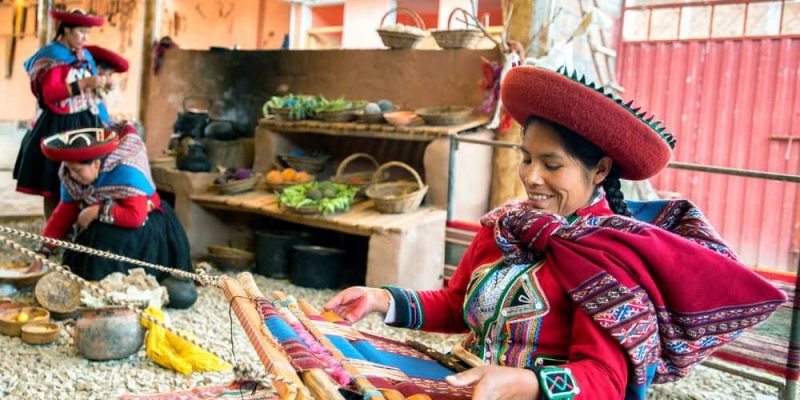
There are numerous ethnic groups on the planet. As an example, the following can be mentioned:
- The Kurdish people. Of Indo-Iranian origins, he lives in the mountainous region of Kurdistan in Western Asia, currently divided between Türkiye, Syria, Iraq and Iran.
- The Persian people. Composed of the ancestral inhabitants of the Iranian plateau, they are speakers of the Farsi or Persian language. Heirs of the old Persian Empire, they converted almost entirely to Islam after the Muslim conquest of the 7th century.
- The Quechua peoples. Made up of a group of South American aboriginal peoples, they originate from the Andes Mountains. Its name derives from the Quechua or Quichua language, typical of the Inca Empire.
- The Armenian people. Originally from the Armenian plateau in Anatolia, in Asia Minor, his language is Armenian, coming from ancient Persian. Many of its members are dispersed throughout the world. The largest communities are found in Russia, the United States, Iran and Lebanon.
- The Magyar people. Its members, known colloquially as Hungariansare the current inhabitants of Hungary, in Eastern Europe. Its origins are a matter of debate. The most accepted explanation maintains a Uralic origin, that is, from the ancestral populations of the Ural Mountains (in the 4th millennium BC).
- The Berber peoples. They comprise a group of indigenous ethnic groups from North Africa, from the region known today as Tamazgha. Currently, they inhabit a large territory, extending from the Canary Islands to the Siwa oasis in Egypt. They speak a set of their own languages (tamazight), derived from Afroasiatic languages.
Main ethnicities of Mexico
As established by its Constitution, Mexico is a multiethnic country, in which diverse cultures coexist, each of which speaks its own language and has its own customs and traditions. Among the main ethnic groups in Mexico are:
- Those of European descent, white or creoles. As their name indicates, they are the descendants of the European settlers who settled in the former Viceroyalty of New Spain between the 16th and 17th centuries, as well as the numerous European migrants that Mexico has welcomed in its subsequent history. They are mostly of Catholic or Protestant religion, and although they speak Spanish, many retain the language of their region of origin.
- The Afro-Mexicans. Descendants of former African slaves forcibly brought to America during the colonial era, they have a mainly Yoruba and Mandinka heritage. Currently, they make up 5% of the Mexican population.
- indigenous peoples. Despite the traumatic history of European conquest and colonization, the descendants of pre-Hispanic aboriginal peoples are very numerous, speaking around 68 different languages and endowed with their own cultural identity. These towns represent between 7% and 15% of the Mexican population. Some of the main ethnicities are:
- The Mayan or Mayan peoples. Its origins date back to 2600 BC. C. For centuries, they were the central civilization of the Mesoamerican region. Today, the Mayan population is made up of almost one and a half million people. They inhabit the regions of the Yucatan Peninsula and northern Chiapas, and speak a Spanish strongly influenced by the Mayan language.
- The Nahua or Nahuatl peoples. Its name comes from the ancestral language that still survives among them. Most are found in the central regions of Mexico, such as the State of Mexico, Hidalgo and Puebla. They are the descendants of the ancient Aztec or Mexica peoples.
- The towns Zapotec. Also called binizáaare the third most important Mexican aboriginal ethnic group. They have almost 800,000 members, almost all of them distributed in the southern region of the country, between Oaxaca and Veracruz. Their language, spoken by 50% of the current Zapotec population, belongs to the Otomangue family, which also includes the language of the Mixtecs and the Otomíes.
- The towns mixtec. Neighbors and former allies of the Zapotecs against the Aztecs, the Mixtec peoples are today made up of about 720,000 people, who still practice many of their ancestral habits.
- The Huichol peoples. Also called Wixárika, they are natives of the Sierra Madre Occidental, in the west of the country, and speakers of a language from the Uto-Aztec branch. Its population is estimated at 43,000 individuals.
- The mestizo Mexicans. The majority ethnic group in Mexico is the result of the complex processes of cultural hybridization that occurred in the region during and after the colony. Its members do not fully identify with either the Aboriginal heritage or the European heritage, and have incorporated elements of both traditions, in what was called during the post-revolutionary Mexican governments as the “mestizo identity.”
- Arab Mexicans. They are the result of a significant migration of individuals of Turkish, Armenian, Iranian, Palestinian and other Middle Eastern ancestry between the 19th and 20th centuries. Although they do not represent even 5% of the country's total population, their presence has been felt in gastronomy, where it gave rise to fusions such as arabic tacos. For the most part, Arab Mexicans practice the Latin Christian, Maronite or Eastern Catholic, or Orthodox Christian religion.
- Asian Mexicans. Representatives of less than 1% of the country's population, their arrival in Mexican territory dates back to the Filipino migration during the Spanish colony. Later, between the 19th and 20th centuries, Japanese, Chinese, Cambodian, Timorese and other Asian peoples migrated, constituting the fastest growing group of immigrants between 1880 and 1920.
Continue with: Cultural diversity
References
- “Ethnicity”, in Wikipedia.
- “Ethnic group”, on Wikipedia.
- “Ethnic group”, in Britannica.
- “Race and ethnicity: How are they different?”, in National Geographic.
- “Ethnic groups of Mexico”, in Wikipedia.
- “What is the difference between race and ethnicity?” (video), on Bluecinante.


